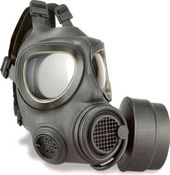A recent study by the Environmental Working Group (EWG) found the average person has over 91 toxic chemicals in their body. Some people had as many as 165, including 76 known to cause cancer, 94 known to be toxic to the brain and nervous system, and 79 known to cause birth defects and abnormal fetal development.
Another EWG study found an average of 200 industrial compounds, pollutants, and other chemicals in the umbilical cord blood of 10 newborn babies. Chemicals found in the second study included the organochlorine pesticides DDT and dieldrin, perfluorochemicals, brominated fire retardants, PCBs, polyaromatic hydrocarbons, polychlorinated and polybrominated dioxins and furans, polychlorinated naphthalenes, and mercury.
If that wasn't enough, the Standard American Diet itself is highly toxic. Processed and refined foods, industrial seed oils, high fructose corn syrup, and even so-called healthy foods like whole grains and soy all have a toxic effect on the body.
How environmental toxins cause diabesity
An increasing amount of evidence has linked exposure to toxins with both obesity and diabetes. Toxins cause inflammation and immune dysregulation. And as you know from reading this series, obesity and diabetes are autoimmune, inflammatory diseases.
I've already discussed the role of food toxins in the diabesity epidemic, so in this article we're going to focus on how industrial chemicals in our air, water and soil contribute.
There are several mechanisms involved. Environmental toxins:
* interfere with glucose and cholesterol metabolism and induce insulin resistance;
* disrupt mitochondrial function;
* cause oxidative stress;
* promote inflammation;
* alter thyroid metabolism; and,
* impair appetite regulation.
There are probably other mechanisms that we don't yet understand. But the ones I listed above are certainly enough to explain the link between toxins and diabesity.
Evidence supporting the role of toxins in the diabesity epidemic
A while back I wrote about a study showing that a chemical called bisphenol-A (BPA), found in packaged foods and beverages, causes obesity in mice.
A more recent study published in JAMA found that BPA increases the risk of diabetes, heart disease, and abnormal liver function.
A 2010 study in Environmental Health Perspectives found that exposure to organic pollutants leads to insulin resistance and metabolic dysfunction in rats.
A review paper by researchers in Korea reached a similar conclusion:
...the metabolic syndrome is the result of mitochondrial dysfunction, which in turn is caused by exposure to persistent organic pollutants.A National Health and Nutrition Examination Survey 1999-2002 observed a significant correlation between blood levels of six common persistent organic pollutants and diabetes. Those who had the highest serum levels of pollutants had a dramatically higher risk for diabetes.
Canadian Aboriginals and Great Lakes sport fishermen both have higher rates of diabetes from eating contaminated seafood.
I could go on, but I think you get the point. Toxins are making us fat and diabetic.
Okay, so I'm toxic! What do I do about it?
The most obvious first step is to remove all food toxins from your diet. This means ditching processed and refined foods, industrial seed oils, and high fructose corn syrup, as well as grains, legumes and other foods with toxic effects on the body.
The second step is to take steps to reduce your exposure to chemicals at home. This means choosing non-toxic household cleaning, bath, beauty and hygiene products.
The third step is to support the body's natural detoxification capacity so you can effectively deal with the toxins you do get exposed to. This is a crucial step, because no matter how careful we are, there's no way to completely avoid toxins.
Compounds that support health liver detoxification include:
* Protective compounds like milk thistle and artichoke leaf extract
* Bile stimulants such as dandelion and curcumin
* Bile motility enhancers (cholagogues) like dandelion, beet juice and coffee enemas
* Antioxidants like vitamins C & E, zinc, selenium and lipoic acid
For those of you that would like some support in this area, I'll be offering a "Paleo Detox" program sometime early next year. It's a 30-day, supervised detoxification program incorporating a paleo diet, targeted nutrients to support healthy liver function, supportive and educational weekly meetings, and guidelines for integrating the positive changes you've made in the program into your day-to-day life. I will offer both local (SF Bay Area) and long-distance (via webinar) programs. Stay tuned for a future announcement on this.




Surely an ocean supertanker doesn't carry 3.25 billion tons?